MLB Player Comps for Josh Gibson, Satchel Paige and More Negro League Legends
Joel ReuterJune 1, 2024MLB Player Comps for Josh Gibson, Satchel Paige and More Negro League Legends

One of the biggest stories in baseball over the past week came off the field, with Major League Baseball announcing that statistics from the Negro Leagues would be added to the official MLB record books.
With that, legendary catcher Josh Gibson is now the career leader in batting average, slugging percentage and OPS, but is far from the only Negro League player who put together some epic stats during his playing career.
It's important to remember when combing through the newly available stats that the Negro League season was generally somewhere between 60 and 80 games, so each season's stats are compiled over the rough equivalent of half a MLB season.
Ahead we've highlighted seven notable standouts, all of whom are members of the Baseball Hall of Fame, and taken a closer look at their statistics while also making a comparison to a MLB player for a bit more context.
Enjoy!
OF Cool Papa Bell

Stats: 1,202 G, 126 OPS+, .325/.394/.446, 1,548 H, 57 HR, 596 RBI, 285 SB, 30.9 WAR
MLB Comp: Ichiro Suzuki
A switch-hitter with blazing speed, Cool Papa Bell played to his strengths extremely well, chopping down on the ball and legging out infield singles before wreaking havoc on the base paths.
That ability to maximize his speed by focusing on contact over power mirrors the approach that made Ichiro Suzuki one of the best pure hitters of his era.
"He was so fast, that if he hit a ground ball to the left side of the infield that took more than one hop, you just couldn't throw him out. Might just as well hold the ball," said Hall of Fame third baseman Judy Johnson (via SABR.org).
He averaged 209 hits per 162 games over the course of his 21-year career, and he was selected to the Baseball Hall of Fame in 1974.
OF Oscar Charleston
- 1921: 77 G, .433/.512/.736, 15 HR, 91 RBI, 6.1 WAR
- 1924: 54 G, .405/.476/.780, 15 HR, 63 RBI, 4.3 WAR
- 1925: 71 G, .427/.523/.776, 20 HR, 97 RBI, 5.4 WAR

Stats: 918 G, 184 OPS+, .365/.449/.615, 1,210 H, 143 HR, 853 RBI, 210 SB, 48.4 WAR
MLB Comp: A left-handed Willie Mays with a better hit tool
Oscar Charleston is the most underrated baseball player in the history of the sport.
His 184 OPS+ now ranks third on the all-time list, behind only Babe Ruth (206) and Ted Williams (191), and just ahead of Barry Bonds (182) and Lou Gehrig (179).
He won the Triple Crown three times in his career, posting eye-popping numbers in each of those seasons:
Extrapolated over a full 162 games, his 1925 season would have been a 45-homer, 221-RBI, 12.3-WAR performance for the ages.
"He was like Ty Cobb, Babe Ruth and Tris Speaker rolled into one," Negro League player and MLB coach Buck O'Neil said (via ESPN).
C Josh Gibson

Stats: 602 G, .373/.458/.718, 808 H, 166 HR, 733 RBI, 40 SB, 38.3 WAR
MLB Comp: Albert Pujols offensively, Johnny Bench behind the plate
Josh Gibson was to the Negro Leagues what Babe Ruth was to Major League Baseball as the most recognizable figure in the sport and a legendary figure long after his playing days came to an end.
"He had the power of Ruth and the hitting ability of Ted Williams," Hall of Famer Buck O'Neil told filmmaker Ken Burns (via MLB.com). "That was Josh Gibson."
He led the league in home runs 11 times over 14 seasons, peaking in 1943 as a member of the Homestead Grays when he hit .466/.560/.867 with 116 hits, 22 doubles, 20 home runs and 109 RBI in only 69 games.
He is now the career leader in batting average (.373), slugging percentage (.718) and OPS (1.176), and his one home run every 13.1 at-bats would slot in behind only Mark McGwire (10.6), Aaron Judge (11.7), Babe Ruth (11.8) and Barry Bonds (12.9) if he had the requisite 3,000 plate appearances to qualify for that leaderboard.
Opted for an Albert Pujols comparison since Gibson was a right-handed hitter, and Pujols possessed arguably the best combination of hit tool and power from the right side of the plate in MLB history at his peak.
1B Buck Leonard

Stats: 604 G, .346/.453/.593, 748 H, 97 HR, 548 RBI, 32 SB, 30.0 WAR
MLB Comp: Jeff Bagwell from the left side
A prolific power hitter and standout defensive first baseman, Buck Leonard was a staple in the Homestead Grays lineup where he often hit cleanup behind star catcher Josh Gibson.
He won the batting title with a .420/.500/.740 line over 178 plate appearances in 1938, and the following season he racked up 10 doubles, 11 home runs and 48 RBI in only 30 games.
Leonard was one of the first three Negro League players inducted into the Baseball Hall of Fame, earning enshrinement alongside Josh Gibson in 1972, a year after Satchel Paige was the first to join the hallowed halls of Cooperstown.
His undersized 5'10", 185-pound frame and elite on-base ability are the driving force behind the Jeff Bagwell comparison, with Bagwell measuring 6'0" and 195 pounds while logging a .408 on-base percentage during his Hall of Fame career.
RHP Satchel Paige

Stats: 224 G, 172 GS, 96-51, 2.52 ERA, 1.04 WHIP, 1,213 K, 1,275.2 IP, 36.7 WAR
MLB Comp: Zack Greinke with better velocity
"With [Satchel] Paige, you have to separate the mythology from the truth, which is difficult to do," wrote David Schoenfield of ESPN.
It's true, the most recognizable name in Negro League history is a larger-than-life figure, but he is also the only player on this list who had a chance to showcase his talents against MLB competition.
He was 41 years old when he signed with Cleveland for the 1948 season, and went on to play five seasons in the majors, posting a 3.31 ERA and 287 strikeouts in 473 innings while tallying 28 wins and 33 saves over 25 starts and 153 relief appearances.
At his peak, he could light up radar guns, but he also boasted pinpoint command that made his vast repertoire even more effective.
As the ace of the staff on a 1934 Pittsburgh Crawfords team that also featured Hall of Famers Josh Gibson, Oscar Charleston, Cool Papa Bell and Judy Johnson, he went 13-3 with a 1.54 ERA, 0.87 WHIP and 152 strikeouts in 145.2 innings.
Excellent command, a wide array of different pitches and an eclectic personality are the reasons for the Zack Greinke comparison, though Paige's stuff was far more electric and his reputation stacks up to any hurler in the history of the game.
RHP/OF Bullet Rogan
- 1922 (Hitter): 74 G, 283 PA, .369/.453/.660, 15 HR, 55 RBI, 16 SB
- 1922 (Pitcher): 26 G, 21 GS, 14-8, 2.83 ERA, 1.08 WHIP, 118 K, 193.2 IP

Hitting Stats: 681 G, .338/.413/.521, 693 H, 50 HR, 419 RBI, 106 SB, 23.4 WAR
Pitching Stats: 214 G, 157 GS, 120-52, 2.65 ERA, 1.16 WHIP, 918 K, 1,500 IP, 37.8 WAR
MLB Comp: Shohei Ohtani
The list of successful two-way players is not limited to Babe Ruth and Shohei Ohtani.
Bullet Rogan pulled double duty for the Kansas City Monarchs throughout the 1920s as the ace of the staff and a power-hitting outfielder, and his performance during the 1922 season rivals what we've seen from Ohtani in recent years.
Armed with what is widely recognized as the best curveball of any pitcher from the Negro Leagues, he completed 136 of his 157 career starts, serving as a workhorse despite an undersized 5'7", 160-pound frame.
Rogan is better known for his work on the mound, while Ohtani has made a bigger impact in the batter's box to this point in his career, but both belong on the short list of legitimate two-way stars.
1B Mule Suttles

Stats: 909 G, .339/.410/.620, 1,093 H, 180 HR, 883 RBI, 85 SB, 36.5 WAR
MLB Comp: Frank Thomas
A 6'3", 215-pound slugger with some of the best power the Negro Leagues had to offer, Mule Suttles authored one of the greatest single-season performances in baseball history during the 1926 season.
In 89 games, he hit .425/.472/.877 with 28 doubles, 19 triples, 32 home runs and 130 RBI, leading the league in batting average, on-base percentage, slugging, OPS+ (241), hits (152), triples, home runs and RBI.
Over the course of his 21-year professional career, he averaged 195 hits, 38 doubles, 32 home runs and 157 RBI per 162 games, and played until he was 43 years old in 1944.
On top of his official stats, he's also credited with hitting .378 with 64 home runs in exhibition games where Negro League players squared off against white MLB players.
A right-handed hitting first baseman with prolific power and strong on-base skills who was one of the faces of the sport at his peak? Sounds an awful lot like Frank Thomas in the 1990s.
B/R Recommends
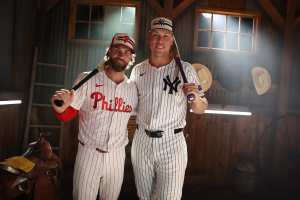
Every MLB Team's Best-Case Scenario for Rest of 2024 Regular Season
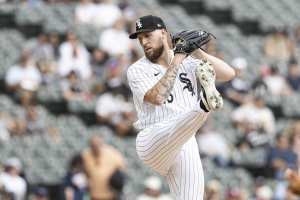
1 Move for Every MLB Team Before the 2024 Trade Deadline
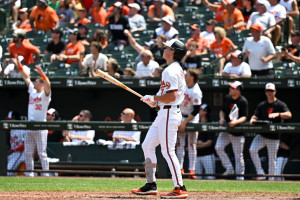
MLB Power Rankings 2024: Where All 30 Teams Stand with 2 Months Until Postseason
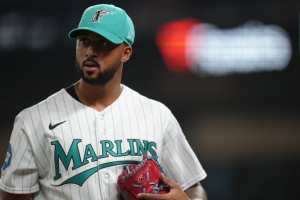
10 Classic MLB Jerseys That Should Be Brought Back
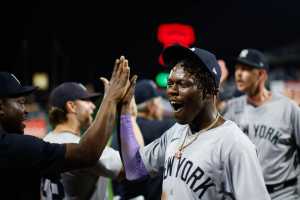
1 Word to Describe Every MLB Team After the 2024 Trade Deadline
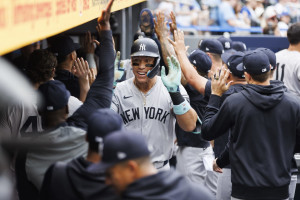
MLB's Top 10 Players at Every Position, August 2024 Edition
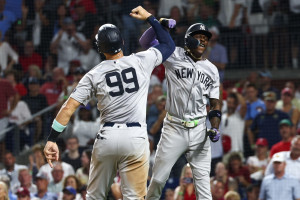
MLB Power Rankings: Where All 30 Teams Stand Post-2024 Trade Deadline
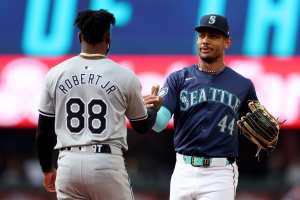
MLB Trade Deadline 2024: Fixing the Biggest Need For Every Contender
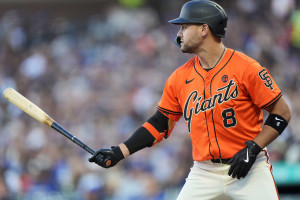
10 Buy-Low MLB Trade Candidates of the 2024 Trade Season
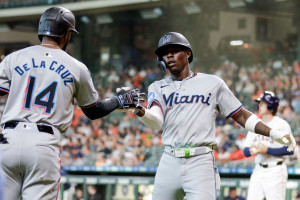
Every MLB Team's Top Priority at the 2024 Trade Deadline





























